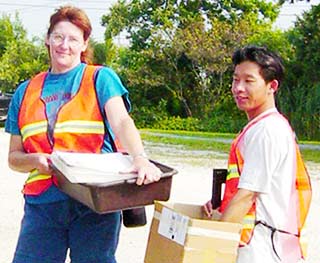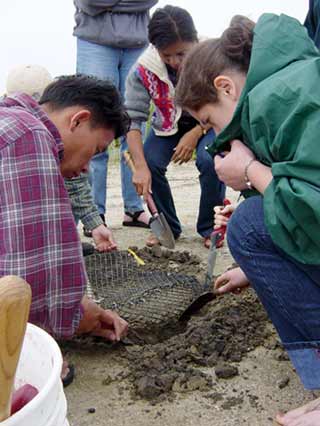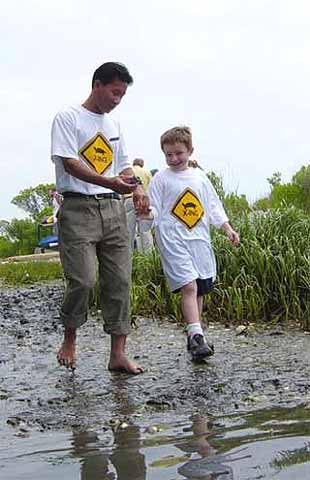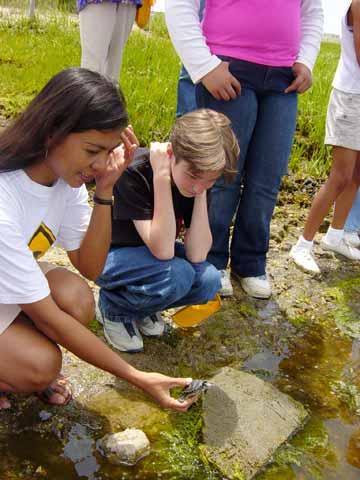|
Road Patrols, Protecting Nests, and Terrapin Releases

By Phouthone (Sedrik) Kingsada
Turtle Road Patrols

During the months of June and July, terrapins come up from salt marshes to find places above high tide to lay eggs.
 |


Linda Watts and Phouthone (Sedrik) Kingsada
assemble materials for road patrol.
 |
|
 |
Unfortunately, more than 800 terrapins die every summer, killed by cars when they cross the roads to lay their eggs. Every day, members of the turtle group go on road patrols in the vicinity of the Wetlands Institute to check for terrapins that have been killed by motorists. Fortunately, we sometimes find live terrapins crossing the roads, and we help them cross the road in the direction they are going. But so far, as of July 18, we have already found 451 dead terrapins.
We take injured and dead turtles to the lab at the Institute, and the dead turtles’ eggs are removed from the carcass (we call this an eggectomy). The eggs are brought to Stockton College for incubation. From the 451 dead terrapins we have recovered 414 eggs so far. If the injured turtles can be saved, they are taken to our veterinarian for rehabilitation, but very badly injured turtles are euthanized.
 |
 |


Sedrik (left) and fellow terrapin
researchers install a nest exclosure.
 |
|
Protecting Nest Sites

Along the nature trial at the Wetlands Institute, you can see a lot of exclosures covering terrapin nests. The exclosures protect terrapin eggs from predators such as raccoons, rats, and skunks until the eggs hatch into baby turtles. So far we have constructed 99 such exclosures along the nature trail.
To build exclosures, we first dig a shallow trench (about 5–6 inches deep) in a circle around the nest, and place a net cover on the top. We record the nest number and date for our data. We will recover the baby turtles when hatch from the exclosures in about six to eight weeks.

Release of Diamondback Terrapins

To help the conservation of this species and to tell the public about the diamondback terrapin, young terrapins are released into the marshes. Hatchlings from the eggs recovered from road-killed terrapins and from nests protected by exclosures are raised for a season until they have grown enough up enough to release.
Each individual turtle’s data (weight and measurements) are recorded, and the young terrapin is given a microchip (which has a unique number) for identification before being released into the water. The microchip is injected just under the turtle’s skin, and when we meet turtle again, it will tell us the turtle’s number turtle when read by a scanner. The turtle’s data can then be compared with the data at the time the turtle was released.
So far this summer, children from four schools have released over 200 young terrapins. Together, we hope we can all help save the turtles.
 |


Sedrik helps boy release a terrapin.
 |
|
 |


Kalyar releases a terrapin at the water’s edge.
 |
|
 |
|